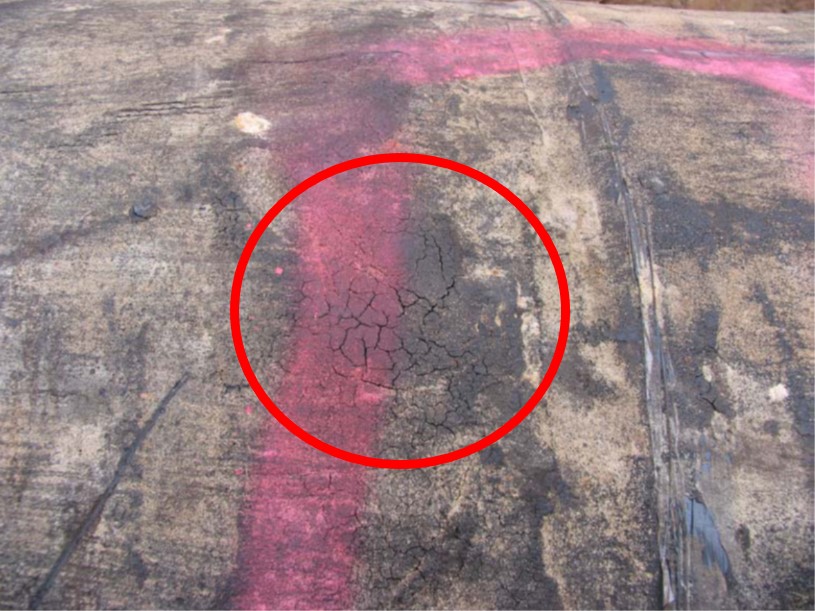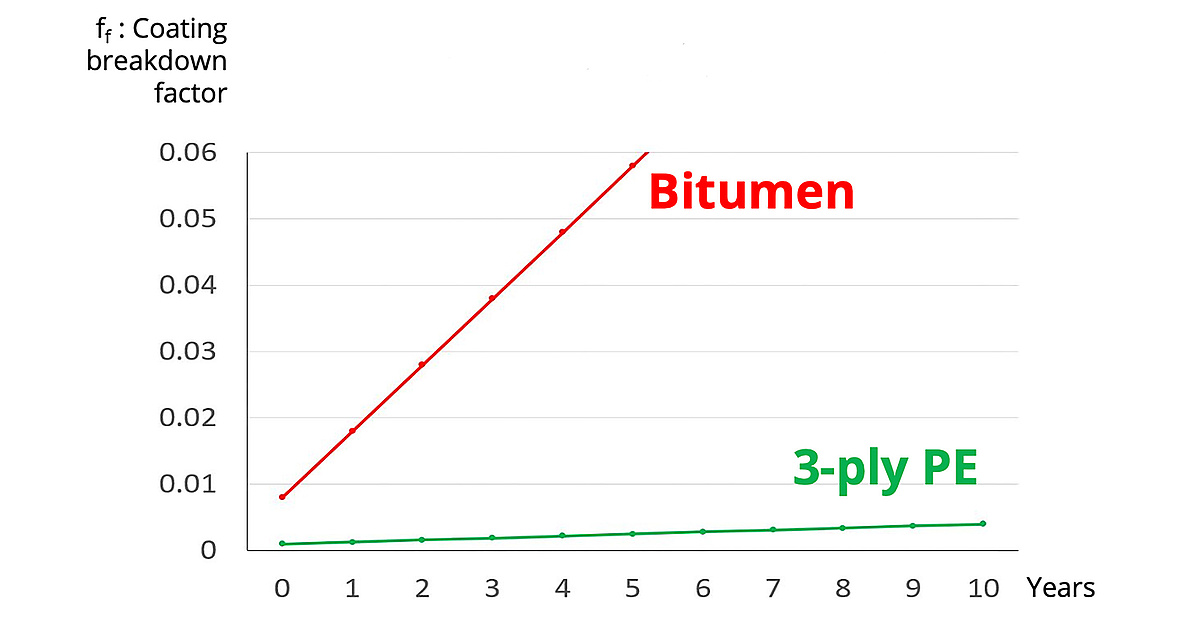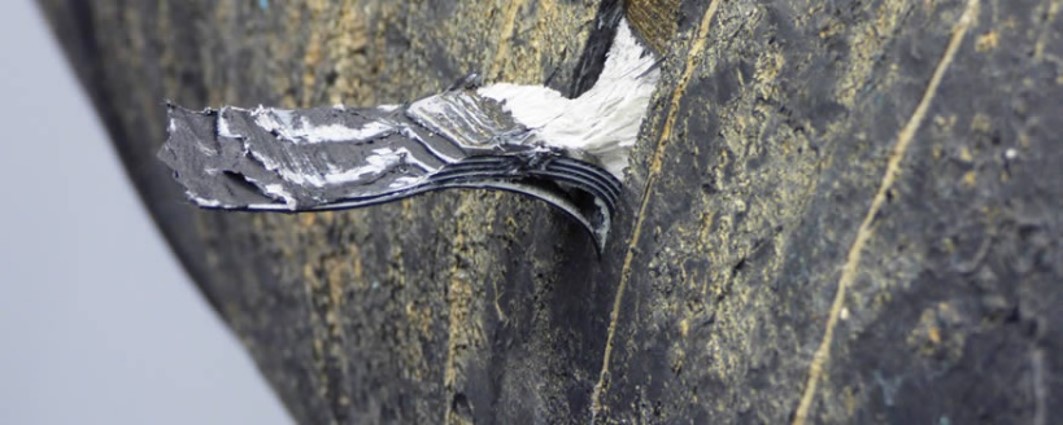50 years of BUTYLEN
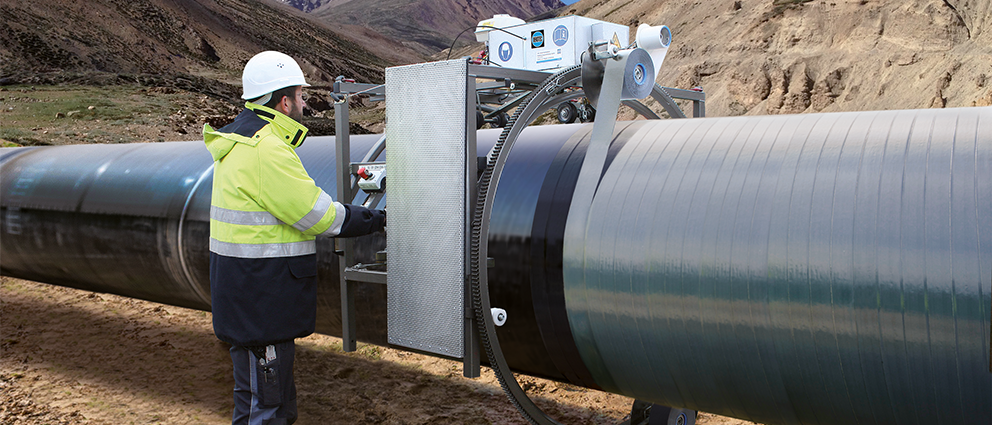
The leading standard.
The combination of materials has been convincing since 1973.
We are proud to be celebrating a special anniversary these days: 50 years ago, we set a new standard in corrosion protection for pipelines with our invention BUTYLEN in terms of quality, safety and durability. The BUTYLEN tape was the first co-extruded three-ply tape using polyethylene (PE) and butyl rubber. This combination of materials has been the basis of our BUTYLEN success story ever since. Various further developments of different tape compositions and system solutions followed. Innovative devices for simple and fast wrapping of the tapes for a wide range of applications and pipe diameters were also developed in-house during this time and guarantee efficient processing.
In over 60 countries, the BUTYLEN product family provides reliable protection for a wide range of requirements. This makes DEKOTEC GmbH the leading supplier of three-ply PE/butyl rubber corrosion protection tapes. And we are not standing still, but continuing our developments: as recently as 2021, we launched BUTYLEN-AS40 HT, the world's first high-temperature-resistant single tape system for operating temperatures up to +100 °C (+212°F).
To mark the anniversary, we are highlighting the advantages of this material combination. Look forward to an informative interview with Thomas Kaiser (Managing Director at DEKOTEC GmbH) and Dr Thomas Löffler (Head of Competence Centre Corrosion Protection at DEKOTEC GmbH)!
Mr Kaiser, let's start at the beginning: What requirements must high-quality corrosion protection tapes fulfil?
Thomas Kaiser: During installation and subsequent operation of the pipelines, the coating does not just need to withstand mechanical attack caused by movements of the pipe and traffic loads, it also needs to provide reliable protection under extremely diverse climatic conditions.
High-quality corrosion protection tapes need to maintain their flexibility even at low temperatures and need to have a high level of impact resistance. The material needs to be thermally stable and elastic, allowing it to react to an applied force before failing. Looking at these requirements more closely shows a significant difference in the intrinsic material properties of polyvinyl chloride (PVC)/bitumen and PE/butyl rubber.
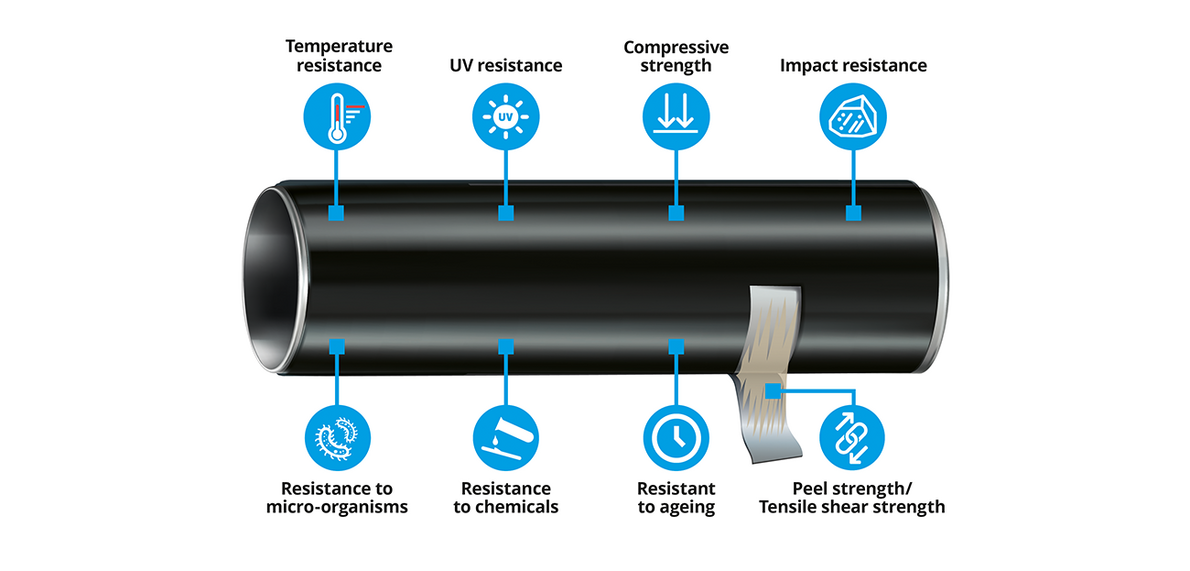
Dr Löffler, what is the basic structure of cold processable polymer tapes?
Dr Thomas Löffler: While PVC or PE are used as backing layer, bitumen or butyl rubber are used for the coating layer that bonds to the pipe after the tape-coating has been applied. It’s important to note that bitumen is only used in two-ply tapes. There is no such thing as high-quality, three-ply tapes that have bitumen as the coating material. Three-ply corrosion protection tapes feature a stabilising PE carrier film with a coating on both sides that is only ever made from butyl rubber. This is an important first indication for the assessment of material suitability.

What do you think of PVC as a carrier film?
Thomas Kaiser: History has shown that products often end up serving as a basis for further developments. In 1835, for example, French chemist Henri Victor Regnault became the first person to produce vinyl chloride, and he noticed that this substance formed a white powder – PVC – when exposed to sunlight for extended periods of time. But Regnault did not appreciate the significance of his discovery. In 1912, German chemist Fritz Klatte synthesised vinyl chloride from ethyne and hydrogen chloride, thereby laying the foundations for the production of PVC.
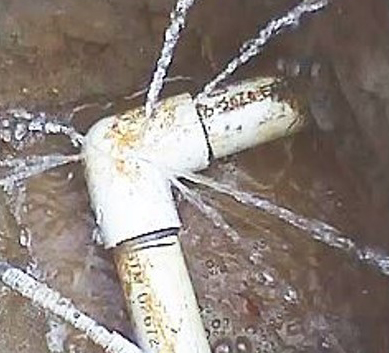
Nowadays, PVC is primarily known for its use in floor coverings and window frames.
In order to use PVC as a layer or film for corrosion prevention, additives are added to the hard and brittle material to make it soft and thermally stable. Thanks to these additives, which have a material share of up to 40 %, PVC is flexible down to minus 18 °C (0.4 °F).
The problem with this, however, is that the additives, and above all the plasticisers, are not stable, but instead are lost again over time. An ageing effect occurs as a result of exudation: The carrier material becomes brittle and cracks occur in the material. PVC is therefore less suitable as a base material for polymer belts.
Dr Thomas Löffler: There is also another disadvantageous effect: If PVC is exposed to higher temperatures, dehydrochlorination (i.e, the separation of toxic hydrogen chloride) occurs from 80 °C (176 °F). If this gas comes into contact with water, this will form hydrochloric acid, which is not only corrosive but also highly caustic. In order to curb or prevent this process, further additives such as thermal or UV stabilisers are also added to the material. There are also dangers for nature and people: if plasticisers get into the environment, they can significantly pollute our groundwater. Furthermore, the raw material for PVC is considered carcinogenic to humans.
Does PE have advantages over PVC as a carrier film?
Dr Thomas Löffler: PE was discovered in 1898 by chemist Hans von Pechmann and in 1933 was manufactured on an industrial scale for the first time by Reginald Gibson and Eric Fawcett in the form of a soft, wax-like coating. An economically profitable manufacturing method was only developed seven years later. PE has many useful properties, and is now primarily used in film production.
Unlike PVC, PE is flexible down to -40 °C (-40 °F) without any additives. As a material, it is very elastic while also being tough, so it can be deformed without breaking.
These are important properties when filling a pipe trench, for example, when forces have an impact on the pipeline from the outside. PE also absorbs less water than PVC, does not require any thermal stabilisers and has good insulating properties due to its high level of electrical resistance.
Thomas Kaiser: The fundamental properties of PE mean that the material is very well-suited for corrosion prevention tapes. Whereas PVC only achieves the desired properties with the addition of additives, PE already has these properties. Therefore, the evaporation of the additives, the resulting material ageing and the health risks seen with PVC do not apply to PE. By the way: PVC is not listed at all in the NACE regulation, one of the few regulations alongside ISO and EN standards in the corrosion protection industry.
Properties of PE at a glance (according to NACE CIP Level II)
- Temperature-resistant up to almost 100 °C (212 °F).
- Good flexibility at low temperatures.
- Exceptional chemical resistance and outstanding tensile strength.
- High impact-resistance and high electrical resistance.
- Non-soluble in organic solvents.
- Does not crack under tension.
If bitumen is used as a coating material, the pipe often has to be rehabilitated after a short time because the corrosion protection material is cracked. What is the cause of this?
Thomas Kaiser: Bitumen is a mixture of different hydrocarbons that is extracted from oil, mainly via the distillation of crude oil. But just 7% of the 1500 types of crude oil are suitable for the extraction of high-quality bitumen. Bitumen has been used as a sealing material for many thousands of years due to its water-repellent and non-water-soluble properties. It is often used as a binding agent in asphalt for road construction.
When bitumen is used as a coating material for pipelines due to its adhesive properties, corrosion prevention experts are indeed often faced with the following problem: The pipeline has to be repaired after a short period because the bitumen has become hard, brittle and porous. The cause lies in the structural ageing of bitumen. It is important to understand the chemical composition of bitumen.
The speed of the ageing process depends on the temperature and the source of the crude oil. The addition of additives (polymers) can slow down the process but can’t stop it altogether. The result is a porous coating and cracks.
Is butyl rubber more suitable as a coating material?
Dr Thomas Löffler: Absolutely, the above speaks for itself. Butyl rubber, also known as isobutene-isoprene rubber, was synthesised on an industrial scale for the first time in 1943 in Germany. It is part of the elastomers group of materials. This means that after being deformed or stretched, it goes back to its original shape again once the forces have subsided.
Butyl rubber is barely permeable to air, gases and moisture, and maintains its elastic properties even at very low temperatures, making it suitable for use down to -67 °C (-89 °F). It is also resistant to ageing and weathering, suitable for use at very high temperatures, and has very good hardness and tensile strength characteristics.
Properties of butyl rubber at a glance (according to NACE CIP Level II)
- Temperature-resistant up to almost 100 °C (212 °F).
- Flexible and malleable material.
- Outstanding acid resistance.
- Typical applications: Mastic, adhesive, sealants.
The following information that has already been established for PVC as a backing layer or carrier film also applies here: Bitumen is not listed in the NACE guidelines.
Thomas Kaiser: Due to its fundamental material properties, butyl rubber is very well-suited for corrosion prevention tapes. If the comparison of backing layer or carrier films found PE to be superior to PVC, then butyl rubber is superior to bitumen as a coating material. Whereas butyl rubber is resistant to ageing, the ageing process of bitumen itself cannot be stopped by the addition of additives. The result: The corrosion protection becomes porous over time and needs to be renewed.
Which product design proves to be more durable and resilient in tests?
Dr Thomas Löffler: The porosity in pipeline coatings is measured by their degradation and recorded by a Coating Breakdown Factor ff. Comparing coatings made from bitumen with those made from three-layer PE (3LPE) shows that the degradation factor of bitumen is much higher than that of 3LPE even right from the start, i.e. immediately after the coating is applied. The degradation of the bitumen coating reaches 25 times that of a 3LPE coating after just five years.
The different behaviour of the different material combinations at higher temperatures has been recreated at 75 °C (167 °F) during tests: The PVC/bitumen tape no longer offers any protection after just 26 hours, whereas the PE/butyl rubber tape remains dimensionally stable and in perfect condition even after 100 days in storage.
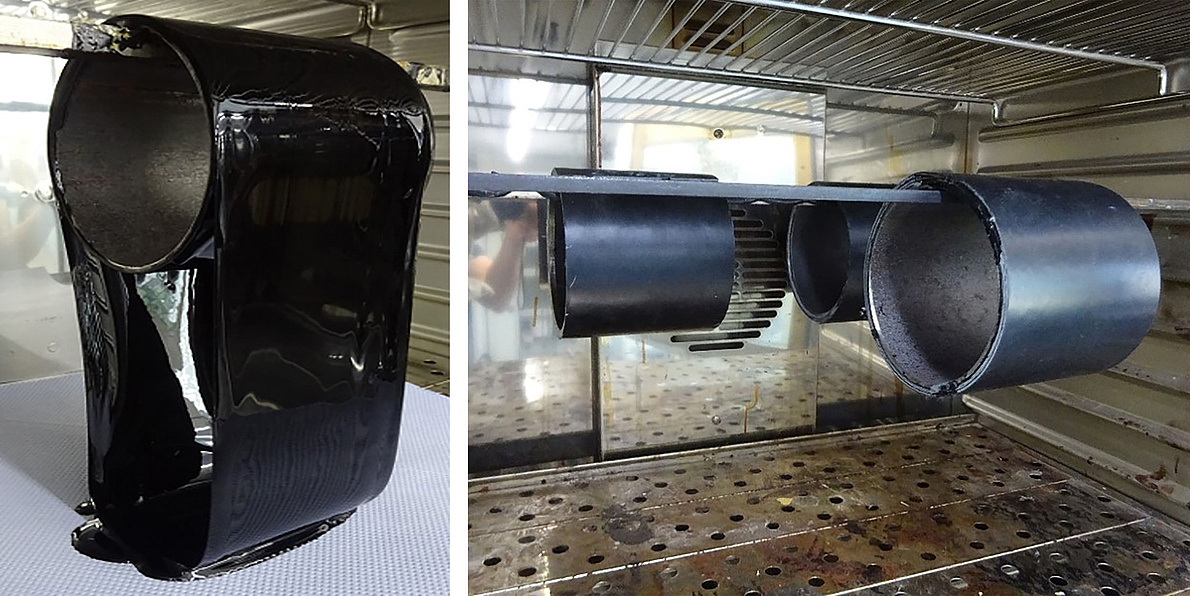
Mr Kaiser, what is the conclusion? Which combination of materials is more reliable?
Thomas Kaiser: From a historical perspective, tapes made from PVC/bitumen were initially a good choice because they could be given the properties necessary for corrosion prevention by the addition of additives. For longer-term project use, however, the product design is less suitable due to the problem of ageing and the increased level of environmental pollution: PVC requires plasticisers and stabilisers, which disappear as the product ages. Bitumen suffers from structural ageing, which makes it become hard, brittle and porous. PE/butyl rubber, on the other hand, already has the required properties and maintains them even over extended periods. PE is flexible and thermally stable, and does not require any additives. Butyl rubber has proven itself to be a stronger and more stable sealing adhesive. This product combination is undoubtedly more resistant, thereby providing the pipe with better long-term corrosion prevention.
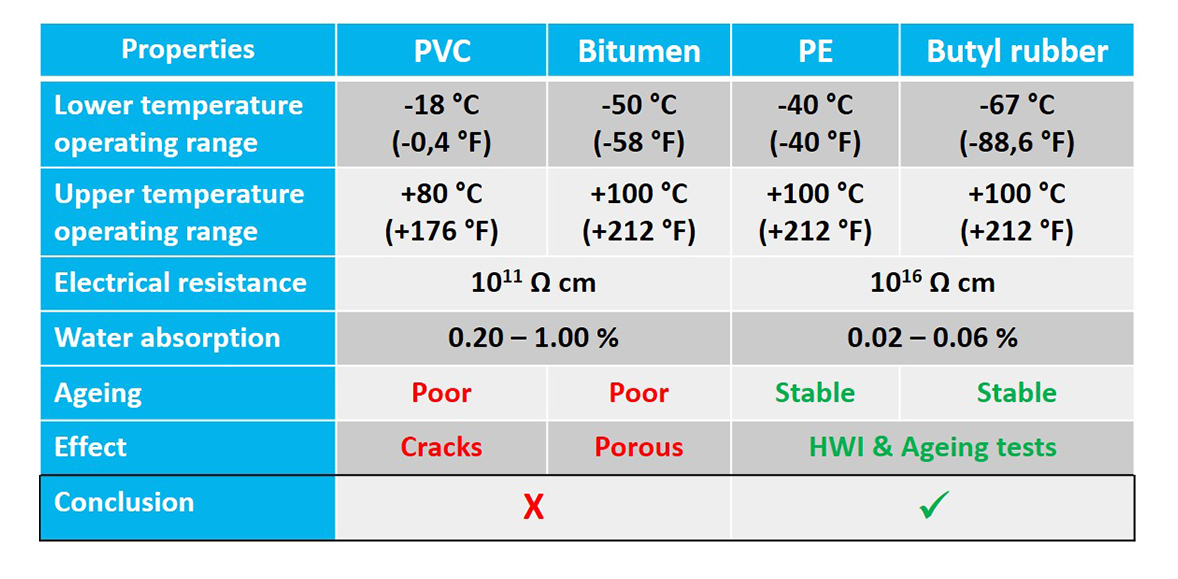
Our BUTYLEN PE/butyl rubber tapes have been setting quality standards for 50 years. Can you name a particular practical example, such as long-term durability?
Thomas Kaiser: Yes, I can – and a very convincing one at that. A piece of pipe from the excavation of the Isarschiene high-pressure natural gas pipeline, built in 1976, provided a unique opportunity.
The section demonstrated very good bonding properties in the peel tests, even after 40 years of operation. The excellent quality of the BUTYLEN tapes was further emphasised by the cohesive separation pattern. The current standard requirements for corrosion prevention coatings were exceeded, even after four decades of use. PE/butyl rubber tapes are therefore able to prove their excellent suitability for corrosion prevention in practice, too (see the DEKOTEC story: Worldwide unique corrosion prevention).
Dr Thomas Löffler: In the past ten years alone, BUTYLEN PE/butyl rubber tapes have been successfully used over a square-metre area in the double-digit million range.
The range of BUTYLEN tapes now includes 242 different products and is sold in over 60 countries. The DEKOMAT® wrapping devices ensure the simple, safe and efficient application of all our tapes and tape systems. They help the processor to consistently maintain the correct winding tension and the required overlapping width while doubling the processing speed compared to manual wrapping. The DEKOMAT® wrapping devices have impressively proven their outstanding quality in major projects involving 24 hours of continuous application. All round the world, they are synonymous with high processing quality and cost-effective application.
Many thanks for the interesting insights!
Find out more here: BUTYLEN corrosion prevention tape (3-ply) and DEKOMAT® application devices.
Contact – What can we do for you?
Do you have questions about products, system solutions or our company? Fill in our contact form. We are looking forward to hearing from you.


